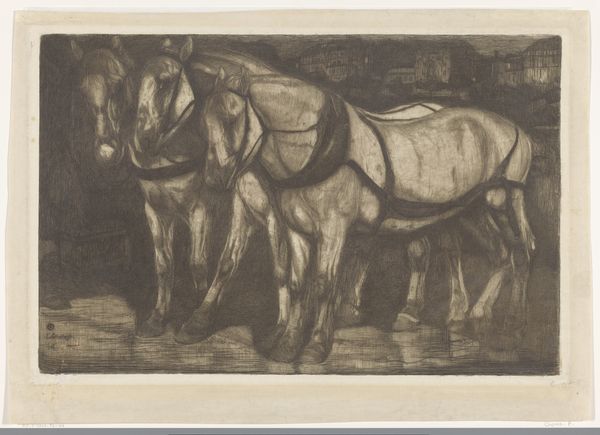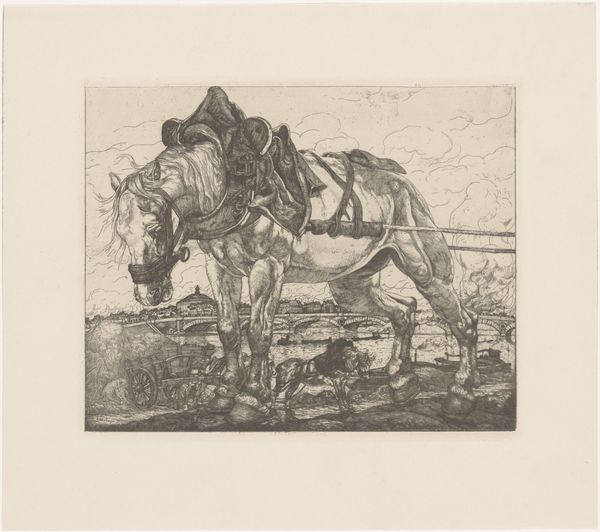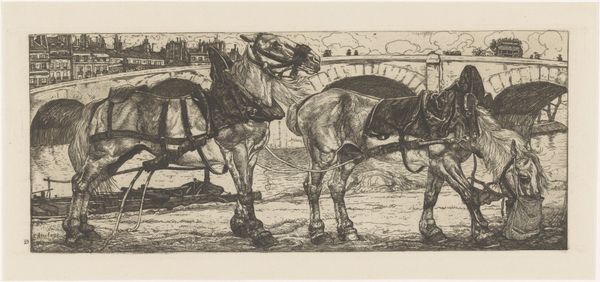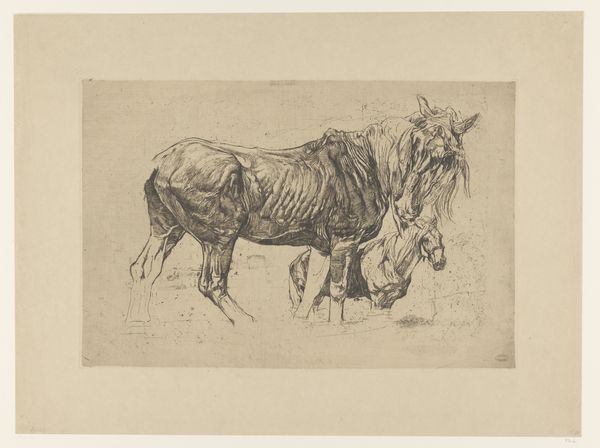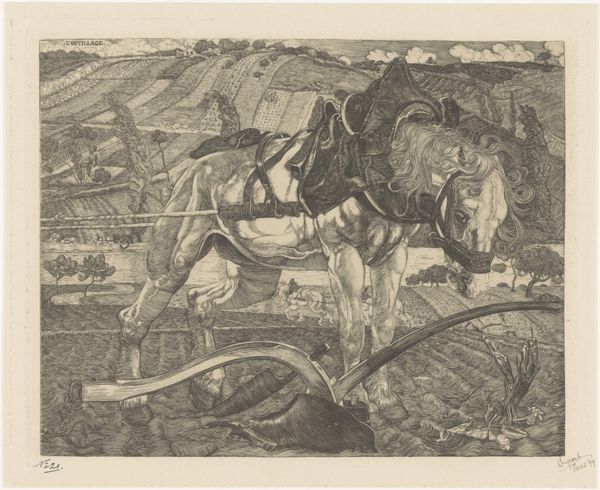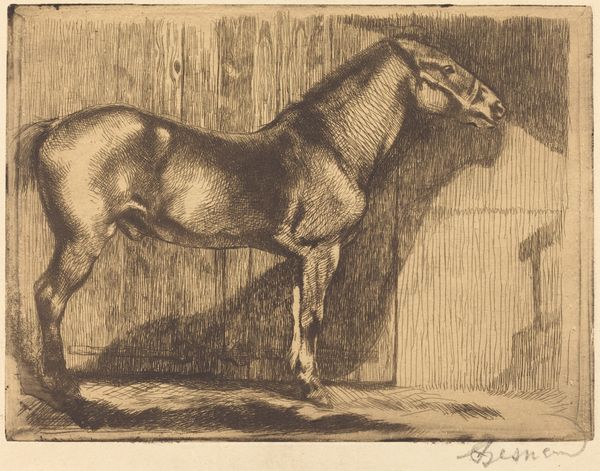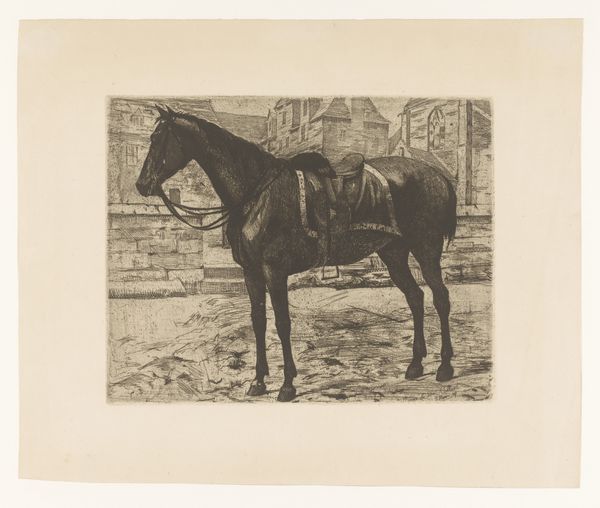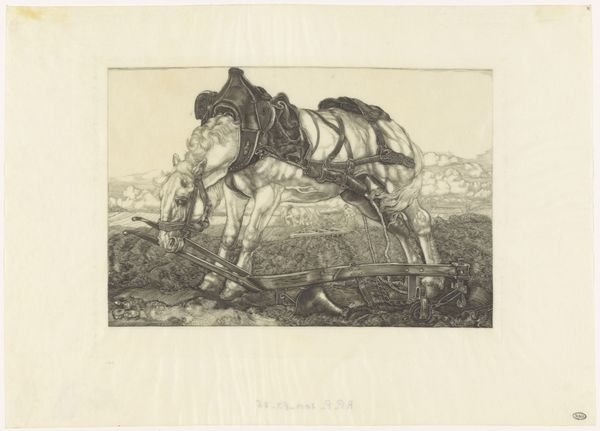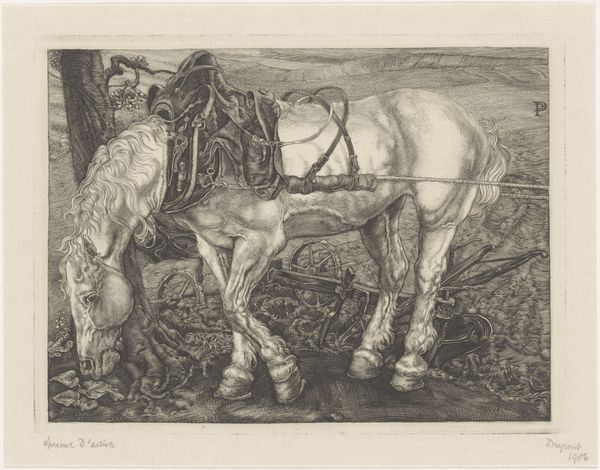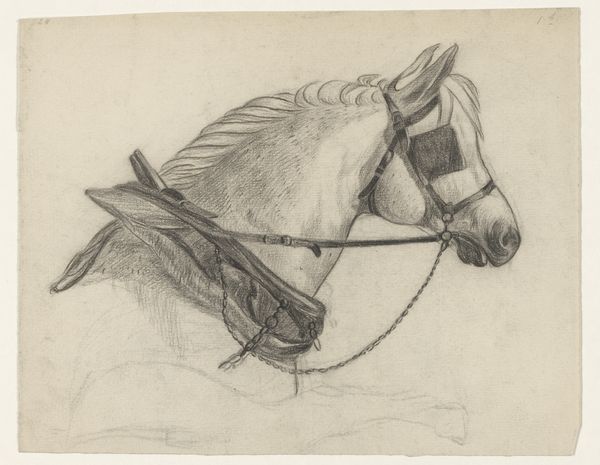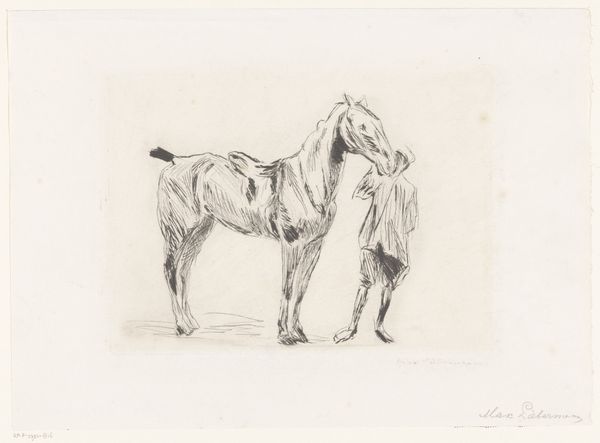
drawing, pencil, graphite
#
portrait
#
drawing
#
pencil sketch
#
pen-ink sketch
#
pencil
#
horse
#
graphite
#
realism
Dimensions: height 449 mm, width 595 mm
Copyright: Rijks Museum: Open Domain
Curator: Welcome. Before us, we have Pieter Dupont's "Garçon d'Ecurie," created around 1896 or 1897. It’s a pencil, graphite, and possibly some pen-and-ink drawing. Editor: My first impression? Stoicism. All that detailed shading makes it almost photographic, but something about those downcast horse eyes and the weariness in the groom's posture hits hard. It feels profoundly human, even if we're mainly looking at horses. Curator: Absolutely. Dupont's piece enters a tradition of Realist depictions of labor that began with Courbet and others mid-century, but here the focus has shifted onto working-class people’s everyday life and conditions rather than overt political messaging. You feel the strain of urban life and the centrality of the animal. Editor: I see it. The backdrop feels deliberately urban, a bit claustrophobic. But look how the lines create texture—the rough cobblestones, the weighty harnesses on the horses—almost as though you could reach out and touch them. You can feel the weight of their responsibility. Makes you wonder, who's really the beast of burden here? Curator: A relevant point indeed, especially when considering Dupont’s historical context. Late 19th century Western Europe was undergoing massive urbanization and industrialization and it’s difficult to ignore how Dupont frames the relationships among these subjects: horses, urban laborers, and a rapidly modernizing environment. Editor: And he doesn't shy away from the mundane, does he? This isn’t some romanticized depiction of rural life. Dupont invites us to consider dignity and perhaps resilience amid relentless work. There’s no heroism here, just existence. A heavy existence at that. Curator: Yes, precisely, Dupont captured and portrayed this kind of reality honestly in "Garçon d'Ecurie," resonating with evolving political and social sensibilities that would come to full force with 20th-century art. Editor: I walked into this conversation feeling this drawing as weighty and sad. Now I realize there’s beauty in that weight. In staring reality down. Thanks for shifting my perspective.
Comments
No comments
Be the first to comment and join the conversation on the ultimate creative platform.

